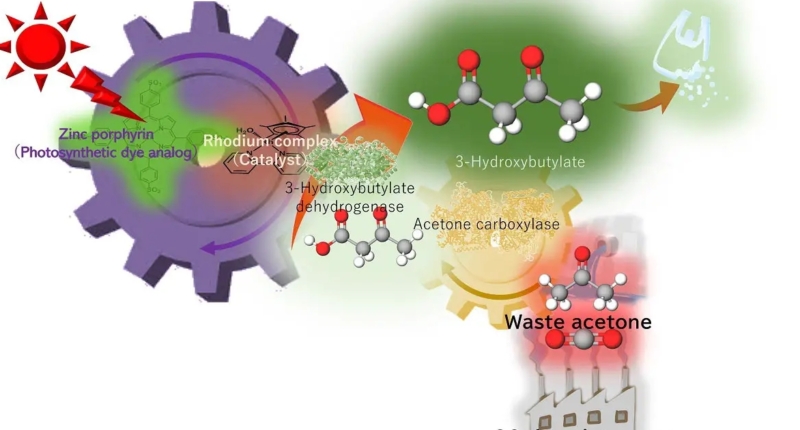A research team led by Professor Yutaka Amao from Osaka Metropolitan University has successfully synthesized biodegradable plastic precursor from waste acetone and low concentrations of CO2 using artificial photosynthesis. The team’s findings were published in Green Chemistry and demonstrated the practical application of artificial photosynthesis, highlighting the possibility of using waste materials to produce sustainable biodegradable plastics. They aim to further develop the technology to use acetone from liquid waste and laboratory exhaust gas as raw materials. The study opens up new possibilities for repurposing industrial waste, reducing the reliance on non-biodegradable plastics that harm the environment, and creating a cleaner future. The top five relevant keywords related to the article are biodegradable plastic, artificial photosynthesis, waste acetone, low concentrations of CO2, and sustainable future.
Artificial Photosynthesis: A Revolutionary Way to Create Biodegradable Plastic from Industrial Waste
A research team led by Professor Yutaka Amao from Osaka Metropolitan University has developed a revolutionary way to create biodegradable plastic from waste acetone and low concentrations of carbon dioxide (CO2) using artificial photosynthesis. The team was able to synthesize poly-3-hydroxybutyrate, a strong and water-resistant polyester commonly used in packaging materials, using light energy equivalent to sunlight, enzymes, and a rhodium catalyst.
The study aimed to repurpose waste acetone, a relatively inexpensive and harmless chemical produced as a byproduct in laboratory settings, and CO2 equivalent to exhaust gas from power plants and other industrial sources. After 24 hours, over 60% of the acetone was successfully converted to 3-hydroxybutyrate. The team’s findings, published in Green Chemistry, highlight the practical application of artificial photosynthesis and their plans to further develop the technology for more efficient use of waste materials.
Previous studies have shown that 3-hydroxybutyrate can be synthesized from CO2 and acetone with high efficiency, but only at higher concentrations of CO2 or sodium bicarbonate. This new study demonstrates that the same can be achieved using low concentrations of CO2, similar to exhaust gas, and waste acetone from permanent marker ink.
The team’s focus on using CO2 created by exhaust gas from thermal power plants and other sources shows the practical application of artificial photosynthesis. The process not only reduces waste and repurposes materials but also creates biodegradable plastic, reducing the reliance on non-biodegradable plastics that harm the environment.
In conclusion, the successful synthesis of biodegradable plastic precursor from waste acetone and low concentrations of CO2 using artificial photosynthesis is a revolutionary step towards reducing waste and creating a more sustainable future. The team’s findings open up new possibilities for repurposing industrial waste, reducing our reliance on non-biodegradable plastics, and creating a cleaner environment for future generations.
Developing Artificial Photosynthesis Technology for More Efficient Waste Repurposing
Professor Amao, the leader of the research team that developed a revolutionary way to create biodegradable plastic using artificial photosynthesis, has stated that their aim is to develop the technology further. The goal is to use acetone from liquid waste and laboratory exhaust gas as raw materials to produce biodegradable plastic precursor, reducing waste even further. This development builds on their previous success in synthesizing poly-3-hydroxybutyrate using low concentrations of CO2 and waste acetone. Their findings were published in Green Chemistry, and the research was funded by the Japan Society for the Promotion of Science.
Don’t miss interesting posts on Famousbio










